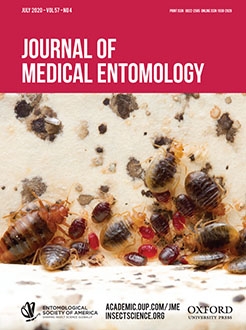We conducted a molecular survey of Rickettsia in fleas collected from opossums, road-killed and live-trapped in peridomestic and rural settings, state parks, and from pet cats and dogs in Georgia, United States during 1992–2014. The cat flea, Ctenocephalides felis (Bouché) was the predominant species collected from cats and among the archival specimens from opossums found in peridomestic settings. Polygenis gwyni (Fox) was more prevalent on opossums and a single cotton rat trapped in sylvatic settings. Trapped animals were infested infrequently with the squirrel flea, Orchopeas howardi (Baker) and C. felis. TaqMan assays targeting the BioB gene of Rickettsia felis and the OmpB gene of Rickettsia typhi were used to test 291 flea DNAs for Rickettsia. A subset of 53 C. felis collected from a cat in 2011 was tested in 18 pools which were all bioB TaqMan positive (34% minimum infection prevalence). Of 238 fleas tested individually, 140 (58.8%, 95% confidence interval [CI]: 52.5–64.9%) DNAs were bioB positive. Detection of bioB was more prevalent in individual C. felis (91%) compared to P. gwyni (13.4%). Twenty-one (7.2%) were ompB TaqMan positive, including 18 C. felis (9.5%) and 3 P. gwyni (3.2%). Most of these fleas were also positive with bioB TaqMan; however, sequencing of gltA amplicons detected only DNA of Rickettsia asembonensis. Furthermore, only the R. asembonensis genotype was identified based on NlaIV restriction analysis of a larger ompB fragment. These findings contribute to understanding the diversity of Rickettsia associated with fleas in Georgia and emphasize the need for development of more specific molecular tools for detection and field research on rickettsial pathogens.
How to translate text using browser tools
3 March 2020
Detection of Rickettsia asembonensis in Fleas (Siphonaptera: Pulicidae, Ceratophyllidae) Collected in Five Counties in Georgia, United States
Marina E. Eremeeva,
Danielle Capps,
Cynthia Logan McBride,
Amanda J. Williams-Newkirk,
Gregory A. Dasch,
Johanna S. Salzer,
Lorenza Beati,
Lance A. Durden
ACCESS THE FULL ARTICLE
It is not available for individual sale.
This article is only available to subscribers.
It is not available for individual sale.
It is not available for individual sale.

Journal of Medical Entomology
Vol. 57 • No. 4
July 2020
Vol. 57 • No. 4
July 2020
cat flea
Georgia
molecular detection
Rickettsia asembonensis
Rickettsia felis
Rickettsia typhi




